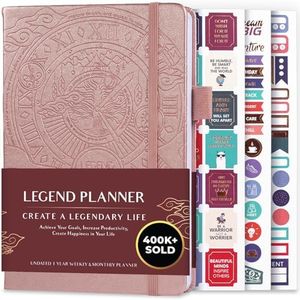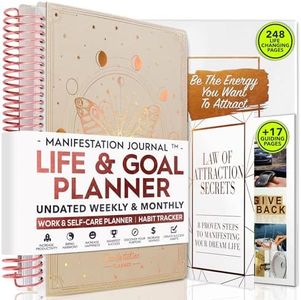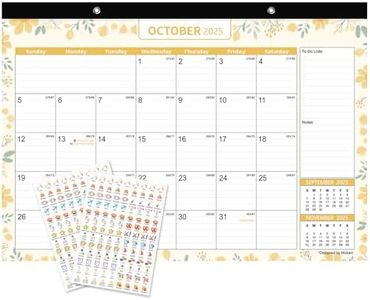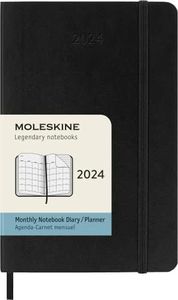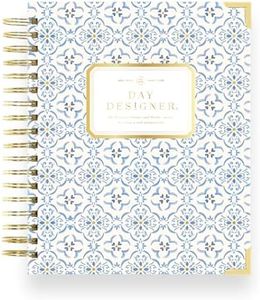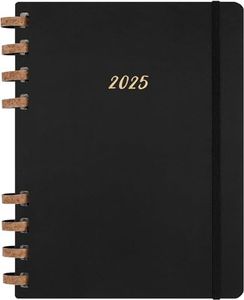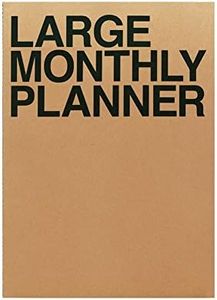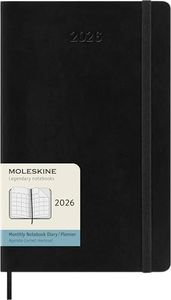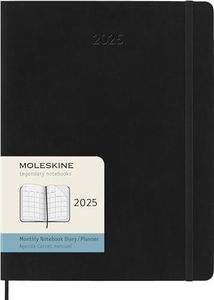We Use CookiesWe use cookies to enhance the security, performance,
functionality and for analytical and promotional activities. By continuing to browse this site you
are agreeing to our privacy policy
10 Best Monthly Planners
From leading brands and best sellers available on the web.Buying Guide for the Best Monthly Planners
Choosing a monthly planner is a great step towards staying organized and managing your time effectively. When picking the best planner for your needs, it's important to consider how you like to plan, what you'll be using the planner for (such as work, school, or personal life), and where you'll be using it (at home or on the go). A good monthly planner should help you see your month at a glance and also fit comfortably into your daily routine. Examining certain features and specs closely will help you find a planner that supports your organization style.SizeThe size of a planner determines how much space you have to write and how portable it is. Sizes range from compact (such as A6 or pocket-sized), which are easy to carry but may have limited writing space, to larger formats (such as A4 or letter-size) that offer more room for notes and details but are bulkier. If you need to travel with your planner or carry it in a small bag, a smaller size is practical. If you primarily use your planner at a desk and want plenty of room to write, a larger size might be better.
LayoutThe layout refers to how the monthly view and pages are arranged—some planners show the whole month on two pages, while others add space for goals, lists, or notes. Monthly-only layouts are best if you want a simple overview, while layouts that include extra sections help if you want to track additional things like deadlines, bills, or important events. Think about whether you prefer a simple grid for appointments or extra room to write down tasks and reminders.
Start MonthPlanners can be either calendar year (starting in January), academic year (starting around July or August), or undated (you fill in the dates). Picking the right start month allows you to jump in when you need it most—you might prefer a calendar-year planner for general life planning or an academic-year planner for school or teaching. Undated planners offer flexibility if you want to start at any time without wasting pages.
BindingBinding affects the durability and how easily the planner lies open. Options include spiral-bound, which opens flat and is good for easy writing; hardcover or softcover book-style, which is sturdy; and disc-binding, which allows you to add or remove pages. If you plan to write in your planner a lot, spiral or disc options may be more comfortable. For a planner that will go through a lot of travel or rough use, a hardcover could be more protective.
Paper QualityPaper quality affects how well the planner holds up to writing, especially if you use pens, markers, or highlighters. Thin paper can lead to ink bleeding through, while thicker paper can handle more types of pens without showing through. If you write heavily or use colorful inks, look for planners with higher-quality, thicker paper to avoid frustration.
Extra FeaturesSome planners come with features like stickers, bookmarks, pockets, or perforated pages. These can make planning more enjoyable or practical, like storing receipts or marking important pages. Consider whether such features would make you more likely to use the planner regularly or help with specific organizing tasks.
